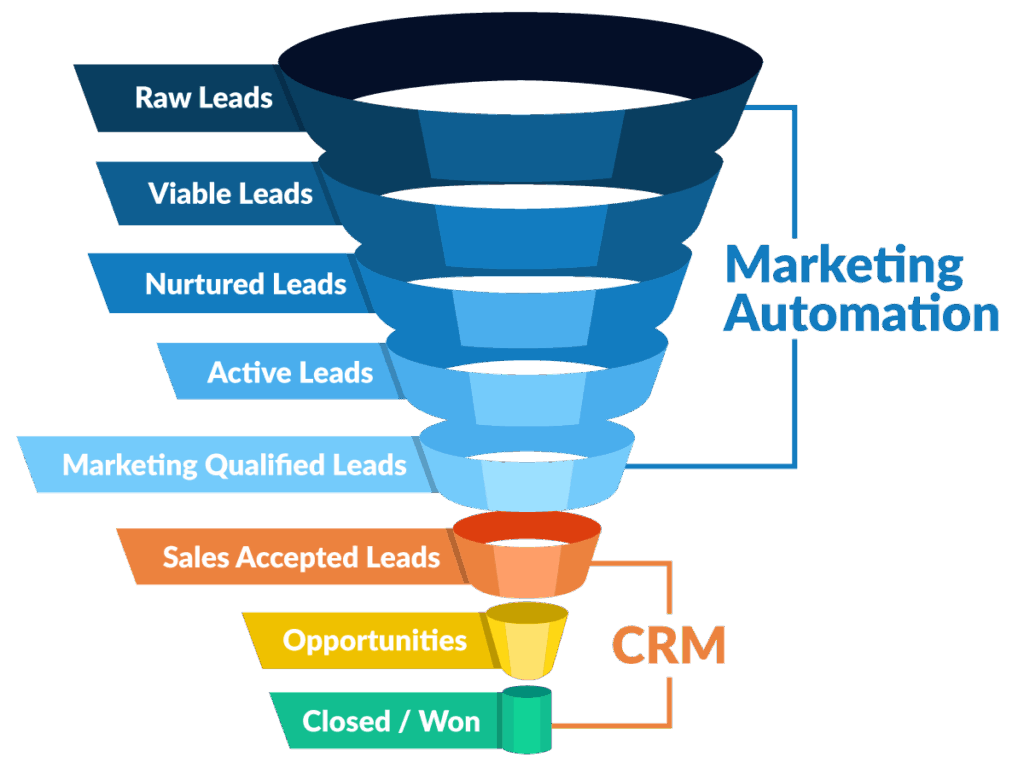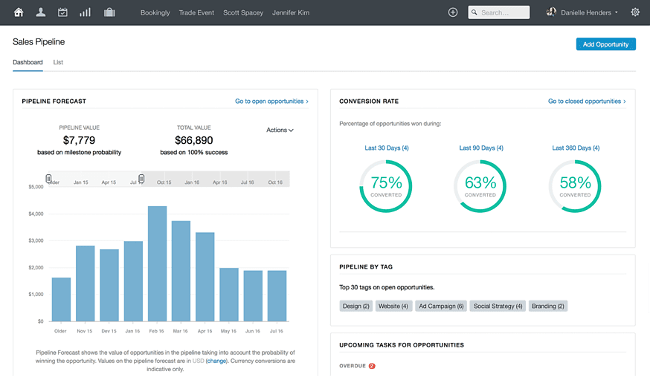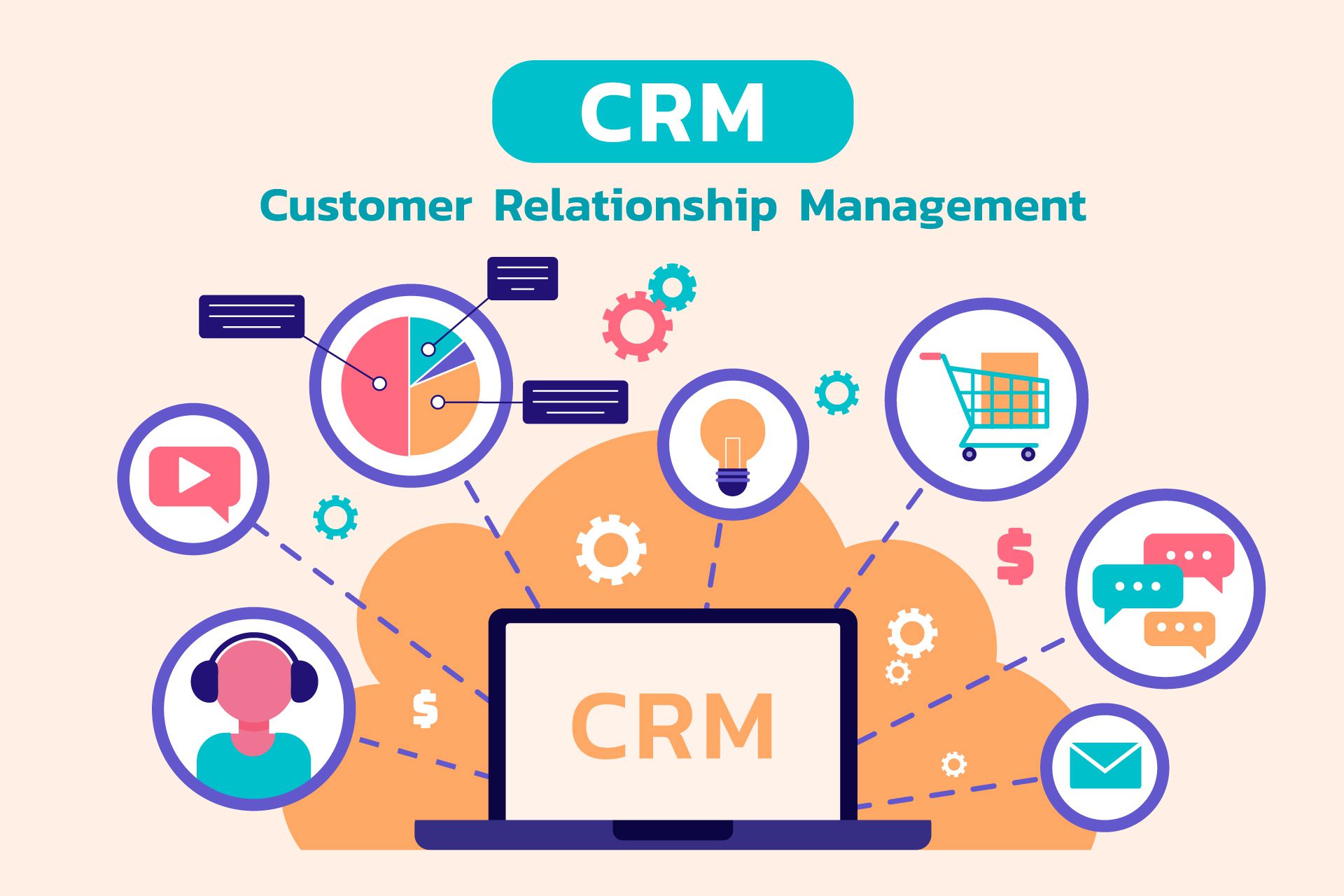
CRM for Marketing Automation: Unleashing the Power of Integrated Strategies
In today’s fast-paced digital landscape, businesses are constantly seeking ways to streamline their operations, enhance customer engagement, and maximize their return on investment (ROI). One of the most effective tools for achieving these goals is the integration of Customer Relationship Management (CRM) systems with marketing automation platforms. This powerful combination allows businesses to manage customer interactions, automate marketing campaigns, and gain valuable insights into customer behavior, ultimately driving growth and profitability. This comprehensive guide delves deep into the world of CRM for marketing automation, exploring its benefits, implementation strategies, and best practices.
Understanding the Fundamentals: CRM and Marketing Automation Defined
Before diving into the specifics, it’s crucial to establish a clear understanding of the core components: CRM and marketing automation.
What is CRM?
CRM, or Customer Relationship Management, is a technology that helps businesses manage and analyze customer interactions and data throughout the customer lifecycle. It acts as a central hub for all customer-related information, including contact details, communication history, purchase history, and preferences. The primary goals of a CRM system are to:
- Improve customer satisfaction
- Enhance customer retention
- Increase sales
- Streamline business processes
CRM systems come in various forms, from simple contact management tools to sophisticated platforms with advanced features like sales force automation, customer service management, and analytics. Popular CRM systems include Salesforce, HubSpot CRM, Zoho CRM, and Microsoft Dynamics 365.
What is Marketing Automation?
Marketing automation is a technology that automates repetitive marketing tasks and workflows to improve efficiency and generate more leads. It involves using software to automate email marketing, social media posting, lead nurturing, and other marketing activities. Key benefits of marketing automation include:
- Increased lead generation
- Improved lead qualification
- Enhanced customer engagement
- Increased marketing ROI
Leading marketing automation platforms include HubSpot Marketing Hub, Marketo, Pardot (Salesforce), and ActiveCampaign.
The Synergy: CRM and Marketing Automation Working Together
The true power lies in the integration of CRM and marketing automation. When these two systems are connected, they create a seamless flow of data and enable businesses to:
- Personalize Customer Experiences: Leverage customer data from the CRM to personalize marketing messages and campaigns, delivering relevant content at the right time.
- Automate Lead Nurturing: Automatically nurture leads through the sales funnel with targeted email sequences, content offers, and other marketing activities.
- Improve Lead Scoring: Score leads based on their behavior and engagement, prioritizing the most promising leads for sales follow-up.
- Enhance Sales and Marketing Alignment: Foster better communication and collaboration between sales and marketing teams, ensuring that both teams are working towards the same goals.
- Gain Actionable Insights: Track and analyze marketing campaign performance, sales results, and customer behavior to make data-driven decisions and optimize marketing efforts.
Benefits of Integrating CRM and Marketing Automation
The integration of CRM and marketing automation offers a multitude of benefits that can significantly impact a business’s bottom line. Here are some of the key advantages:
1. Increased Efficiency and Productivity
By automating repetitive tasks and streamlining workflows, the integration of CRM and marketing automation frees up valuable time for marketing and sales teams. This allows them to focus on more strategic activities, such as developing creative campaigns, building relationships with customers, and closing deals. Automation also reduces the risk of human error and ensures that tasks are completed consistently and accurately.
2. Improved Lead Generation and Qualification
Marketing automation can be used to generate leads through various channels, such as landing pages, forms, and social media. The CRM system can then be used to capture and store lead data, allowing for better lead qualification. By tracking lead behavior and engagement, businesses can identify the most promising leads and prioritize them for sales follow-up. This leads to a higher conversion rate and a more efficient use of sales resources.
3. Enhanced Customer Engagement and Personalization
With the integration of CRM and marketing automation, businesses can personalize their marketing messages and campaigns based on customer data, such as demographics, purchase history, and preferences. This allows them to deliver relevant content at the right time, leading to increased customer engagement and satisfaction. Personalized marketing can also help to build stronger relationships with customers and foster brand loyalty.
4. Increased Sales and Revenue
By improving lead generation, qualification, and customer engagement, the integration of CRM and marketing automation can directly contribute to increased sales and revenue. Automation can also be used to nurture leads through the sales funnel, helping to close deals faster and more efficiently. By tracking sales results and analyzing customer behavior, businesses can identify opportunities to improve sales performance and increase revenue.
5. Better Sales and Marketing Alignment
The integration of CRM and marketing automation can help to align sales and marketing teams, ensuring that they are working towards the same goals. This can be achieved by sharing data, tracking performance metrics, and establishing clear communication channels. When sales and marketing teams are aligned, they can work together more effectively to generate leads, close deals, and drive revenue.
6. Improved Reporting and Analytics
CRM and marketing automation systems provide valuable data and analytics that can be used to track marketing campaign performance, sales results, and customer behavior. This data can be used to make data-driven decisions and optimize marketing efforts. By tracking key metrics, businesses can identify what is working and what is not, allowing them to make adjustments to their strategies and improve their ROI.
Key Features to Look for in a CRM for Marketing Automation
When choosing a CRM system for marketing automation, it’s important to look for certain key features that will enable seamless integration and optimal performance:
- Contact Management: Essential for storing and organizing customer data, including contact details, communication history, and purchase history.
- Lead Management: Enables tracking and managing leads throughout the sales funnel, from lead generation to conversion.
- Sales Automation: Automates sales tasks, such as email follow-ups, task reminders, and deal tracking.
- Marketing Automation Integration: Seamless integration with marketing automation platforms, allowing for data sharing and workflow automation.
- Email Marketing: Capabilities for sending targeted email campaigns, managing email lists, and tracking email performance.
- Workflow Automation: Automates repetitive tasks and processes, such as lead nurturing, customer onboarding, and customer service requests.
- Reporting and Analytics: Provides insights into marketing campaign performance, sales results, and customer behavior.
- Segmentation: Allows for segmenting customer data based on demographics, behavior, and preferences, enabling targeted marketing campaigns.
- Integrations: Compatibility with other essential business tools, such as social media platforms, e-commerce platforms, and accounting software.
- Mobile Accessibility: Provides access to customer data and CRM features on mobile devices, allowing for on-the-go access and productivity.
Implementing CRM and Marketing Automation: A Step-by-Step Guide
Implementing CRM and marketing automation can seem daunting, but with a well-defined strategy and a systematic approach, businesses can ensure a successful implementation. Here’s a step-by-step guide:
1. Define Your Goals and Objectives
Before implementing any new technology, it’s crucial to define your goals and objectives. What do you hope to achieve with CRM and marketing automation? Are you looking to increase lead generation, improve customer engagement, or boost sales? Having clear goals will help you choose the right tools, develop the right strategies, and measure your success.
2. Choose the Right CRM and Marketing Automation Platforms
There are many CRM and marketing automation platforms available, so it’s important to choose the ones that best fit your business needs. Consider factors such as your budget, your business size, your industry, and the features you need. Research different platforms, compare their features, and read reviews from other users. Some popular options include Salesforce, HubSpot, Zoho CRM, and Marketo.
3. Plan Your Implementation
Once you’ve chosen your platforms, it’s time to plan your implementation. This includes defining your workflows, mapping your data, and setting up your integrations. Create a project plan that outlines the steps involved, the timelines, and the resources needed. This will help you stay organized and on track.
4. Migrate Your Data
Migrating your data from your existing systems to your new CRM and marketing automation platforms is a critical step. Ensure that your data is clean, accurate, and properly formatted. Consider using a data migration tool or hiring a data migration specialist to help with this process.
5. Configure Your Systems
Configure your CRM and marketing automation platforms to meet your specific business needs. This includes setting up your user accounts, customizing your dashboards, and configuring your integrations. Take the time to learn the features of your platforms and explore all the customization options.
6. Train Your Team
Training your team on how to use the new systems is essential for successful implementation. Provide comprehensive training on the features, workflows, and best practices. Encourage your team to ask questions and provide feedback. Consider creating training materials, such as user manuals and videos.
7. Test Your Systems
Before launching your CRM and marketing automation systems, test them thoroughly. This includes testing your workflows, your integrations, and your reporting. Make sure that everything is working as expected and that your data is flowing correctly. Identify and fix any issues before you go live.
8. Launch and Monitor
Once you’ve completed testing, it’s time to launch your systems. Monitor your systems closely and track your progress. Analyze your data and make adjustments to your strategies as needed. Regularly review your systems and make improvements to ensure that they are meeting your needs.
Best Practices for CRM and Marketing Automation Integration
To maximize the benefits of CRM and marketing automation integration, it’s important to follow these best practices:
- Start with a Clear Strategy: Define your goals, target audience, and key performance indicators (KPIs) before implementing any new technology.
- Prioritize Data Quality: Ensure that your customer data is accurate, complete, and up-to-date. Data quality is crucial for effective marketing automation.
- Segment Your Audience: Segment your audience into different groups based on demographics, behavior, and preferences. This allows for targeted marketing campaigns.
- Personalize Your Messaging: Personalize your marketing messages based on customer data. This increases engagement and improves conversion rates.
- Automate Your Workflows: Automate repetitive tasks and processes, such as lead nurturing, customer onboarding, and customer service requests.
- Track Your Results: Track your marketing campaign performance, sales results, and customer behavior. This allows you to make data-driven decisions and optimize your efforts.
- Integrate Your Systems: Ensure that your CRM and marketing automation platforms are seamlessly integrated. This allows for data sharing and workflow automation.
- Provide Regular Training: Train your team on how to use the new systems and provide ongoing support.
- Continuously Optimize: Regularly review your systems and make improvements to ensure that they are meeting your needs.
- Foster Collaboration: Encourage collaboration between sales and marketing teams to ensure that they are working towards the same goals.
Real-World Examples: CRM and Marketing Automation in Action
To understand the practical applications of CRM and marketing automation, let’s look at some real-world examples:
Example 1: E-commerce Business
An e-commerce business uses CRM to track customer purchase history and preferences. They integrate their CRM with their marketing automation platform to send targeted email campaigns. For example, they send a welcome email to new customers, followed by a series of emails showcasing related products based on their purchase history. They also use automation to send abandoned cart emails, reminding customers of items left in their shopping carts.
Example 2: SaaS Company
A SaaS company uses CRM to manage leads and track their progress through the sales funnel. They integrate their CRM with their marketing automation platform to nurture leads with targeted content, such as ebooks, webinars, and case studies. They use lead scoring to identify the most qualified leads and prioritize them for sales follow-up. They also automate the onboarding process for new customers, providing them with helpful resources and support.
Example 3: Real Estate Agency
A real estate agency uses CRM to manage leads and track property listings. They integrate their CRM with their marketing automation platform to send targeted email campaigns to potential buyers based on their property preferences. They also automate the process of sending property updates and scheduling showings. Furthermore, they use automation to nurture leads through the sales funnel, providing them with valuable information and support.
Challenges and Considerations
While the benefits of CRM and marketing automation integration are numerous, there are also some challenges and considerations to be aware of:
- Data Integration Complexity: Integrating different systems can be complex, requiring careful planning and execution.
- Data Quality Issues: Poor data quality can hinder the effectiveness of marketing automation campaigns.
- Change Management: Implementing new systems and processes can require significant change management efforts.
- Training and Adoption: Ensuring that your team is properly trained and adopts the new systems can be challenging.
- Cost: CRM and marketing automation platforms can be expensive, especially for larger businesses.
- Compliance: Compliance with data privacy regulations, such as GDPR and CCPA, is essential.
The Future of CRM and Marketing Automation
The future of CRM and marketing automation is bright, with ongoing advancements in technology and increasing demand for personalized customer experiences. Some key trends to watch include:
- Artificial Intelligence (AI): AI is being used to automate more tasks, personalize marketing messages, and provide deeper insights into customer behavior.
- Machine Learning (ML): ML is being used to improve lead scoring, predict customer churn, and optimize marketing campaigns.
- Hyper-Personalization: Businesses are increasingly focused on delivering highly personalized experiences based on individual customer data.
- Omnichannel Marketing: Businesses are using multiple channels, such as email, social media, and mobile, to reach customers and provide a seamless customer experience.
- Focus on Customer Experience: Businesses are prioritizing customer experience and using CRM and marketing automation to improve customer satisfaction and loyalty.
Conclusion: Embracing the Power of CRM and Marketing Automation
Integrating CRM and marketing automation is a powerful strategy for businesses looking to enhance their customer relationships, streamline their marketing efforts, and drive growth. By understanding the fundamentals, following best practices, and staying up-to-date on the latest trends, businesses can leverage the power of these technologies to achieve their business goals. From lead generation and customer engagement to sales and revenue growth, the possibilities are endless. By embracing this integrated approach, businesses can position themselves for success in today’s competitive marketplace.
The journey to CRM and marketing automation success requires careful planning, strategic execution, and a commitment to continuous improvement. By investing in the right tools, training your team, and following best practices, you can unlock the full potential of these powerful technologies and transform your business.

